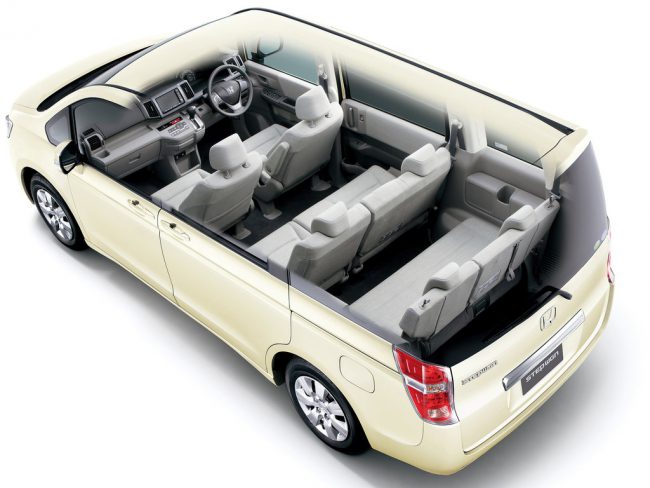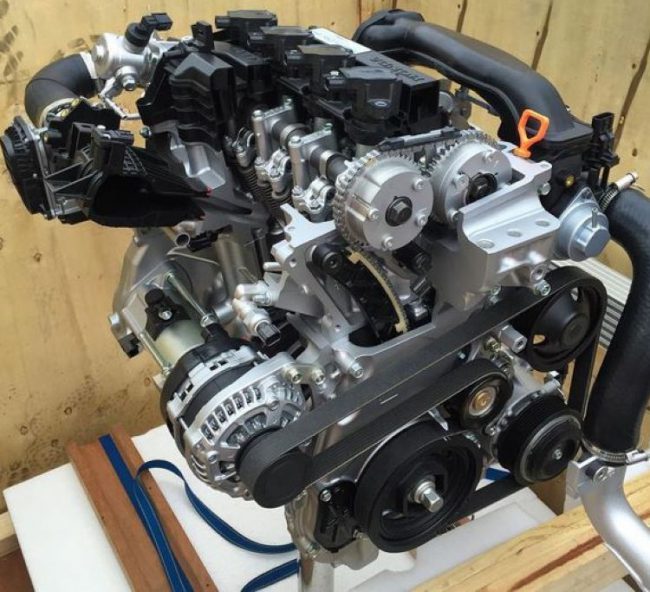
Honda Stepwgn Engines
Content
The Honda Stepwgn is a multi-purpose vehicle that has been in production since 1996. It has a comfortable high cabin, which compares favorably with the Honda Odyssey. The car has a huge capacity - 8 people. For comparison, the Odyssey minivan has seven passenger seats.

The first generation (1996-01) of the car was presented at the Tokyo Motor Show in 1995. A year later, sales of new items in Japan started. From the first days of its appearance, Stepvagon successfully competed with analogues. The closest competitors in 1996 installed the engine under the driver's seat, while Stepvagon put the power unit in front, similar to passenger cars.
Affordable price also helped the successful promotion in the market. Customers were also attracted by the convenient layout of the doors - there is a sliding door on the passenger side. Paired with an in-line 4-cylinder engine, a variator was installed. In addition, the design minimizes the number of steel panels and metal parts.
Already in 1997, the Honda Stepwgn underwent changes. 2 SRS airbags were installed and an ABS system was installed. A number of other convenient features have been introduced. An updated version has been available on the market since 1997. Stepwgn field deck, released in 1998, was intended for outdoor recreation. In 1999, the exterior design was updated.
The second generation (2001-05) of cars was produced with an emphasis on the preferences of buyers with families and children. The car seats are movable. Arrangement was provided for sleeping, eating, playing and transporting goods. The motor has become more economical, driving performance has been improved. The design was updated in 2003.
The third generation (2005-09) Honda Stepwagon is distinguished by the presence of sliding doors on both sides. A structural change in the body made it possible to successfully compete with such popular cars as the Nissan Serena and Toyota Estima. The chassis received a new smaller platform, while the interior of the room remained unchanged. The car has become shorter, while the internal volume has not changed much. The low floor remained the same.
The fourth generation (2009-15) has undergone a complete redesign. The novelty has become higher, longer, the width has remained at the same level. The unique headlight design and grille have been retained. Updating the appearance of 4th generation vehicles took place in 2012.
The fifth generation is produced from 2015 to the present. It has a 1,5-liter internal combustion engine with turbocharging and a VTEC system with direct injection. The salon is perhaps the most functional of all generations of cars. An innovative Waku Waku mechanism has been introduced into the trunk.
What engines were installed on the car
| Generation | brand, body | Years of production | Engine | Power, hp | Volume, l |
|---|---|---|---|---|---|
| Fifth | Stepwgn, minivan | 2017 - present | L15B LFA | 150 145 | 1.5 2 |
| 2015-17 | L15B | 150 | 1.5 | ||
| Fourth | Stepwgn, minivan | 2012-15 | R20A | 150 | 2 |
| 2009-12 | R20A | 150 | 2 | ||
| The third | Stepwgn, minivan | 2007-09 | K20A K24A | 155 162 | 2 2.4 |
| 2005-07 | K20A K24A | 155 162 | 2 2.4 | ||
| Second | Stepwgn, minivan | 2003-05 | K20A K24A | 160 162 | 2 2.4 |
| first | Stepwgn, minivan | 1999-01 | B20B | 135 | 2 |
| 1996-99 | B20B | 125 | 2 |
Common Motors

In the fifth generation of cars, the L15B internal combustion engine is more common. In the production of fourth generation vehicles, only the R20A engine was used. When assembling third-generation cars, the K20A and K24A were equally popular. Second-generation cars also often have K20A. The first generation Stepwgn used only B20B engines.
Car with which engine to choose
The Stepvagon with the L15B engine is very popular. The unit is reliable and relatively unpretentious. A small volume of 1,5 liters compensates for the presence of turbocharging. With all this, fuel consumption in economical mode is simply amazing - only 7 liters. And this is with decent dimensions and carrying capacity.
A car with this internal combustion engine starts dynamically, accelerates confidently when overtaking. The L15B is comparable in power to a 2,4-liter naturally aspirated engine. In terms of dynamism, it is not inferior to the Subaru Forester with a 2-liter engine with a capacity of 150 horsepower. Cars with the L15B are so practical that they are suitable for both couples and drive seekers. Driving performance, ergonomics, convenience and comfort are attractive.
Among other things, cars with the most common engines K20A and K24A are interesting. Internal combustion engines from the same series suffer from similar problems. Often camshafts fail. The presence of a problem is indicated by an increased sound of the motor. At least the chain is pulled out of the permissible limits. The need for repair is indicated by a muffled tapping when the motor is running.
The B20B engine, which was installed on the first generation Stepwgn, showed itself not from the best side. The distributor often fails. Moreover, in two versions of the engine, it is different and has 9 or 10 contacts. Therefore, when replacing, you need to be careful.
In addition, along with the B20B is not the most reliable power steering. Every season you have to deal with GUR snacking and howling as a result. The motor itself, with proper maintenance, is quite good. Upsets except that only oil consumption. In addition, the power of the internal combustion engine in some cases may not be enough.
Maintainability
The first 2 generations of Stepvagon are considered more practical. For cars manufactured in 1996-2005, it is easier to find spare parts, repair kits and other trifles. There are a lot of similar spare parts and spare parts made in Japan. In addition, on disassembly, you can easily find any units.
It is more difficult with the search for components for Stepwgn 3-5 generations. It will take a lot of time to find the necessary part. In addition, the availability of spare parts was affected by a drop in demand for right-hand drive cars. The reason is the ban on the import of such vehicles into the territory of the Russian Federation.

